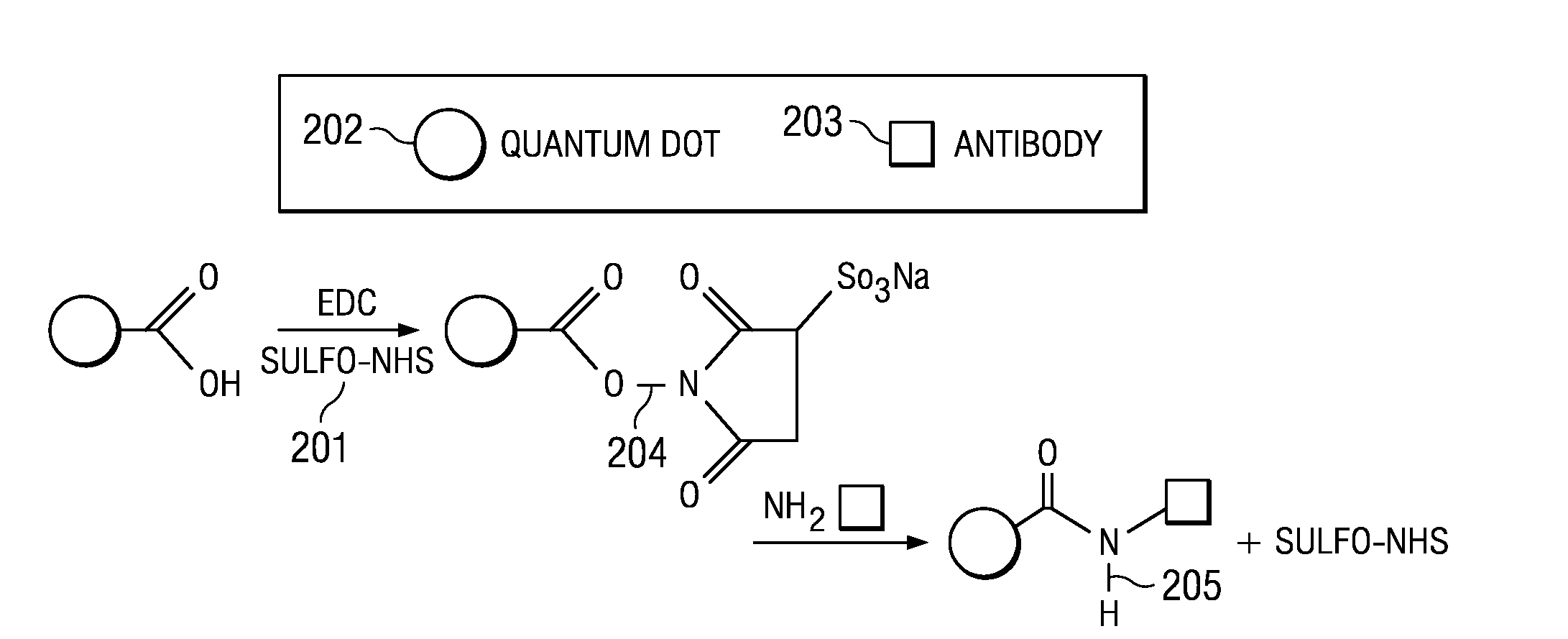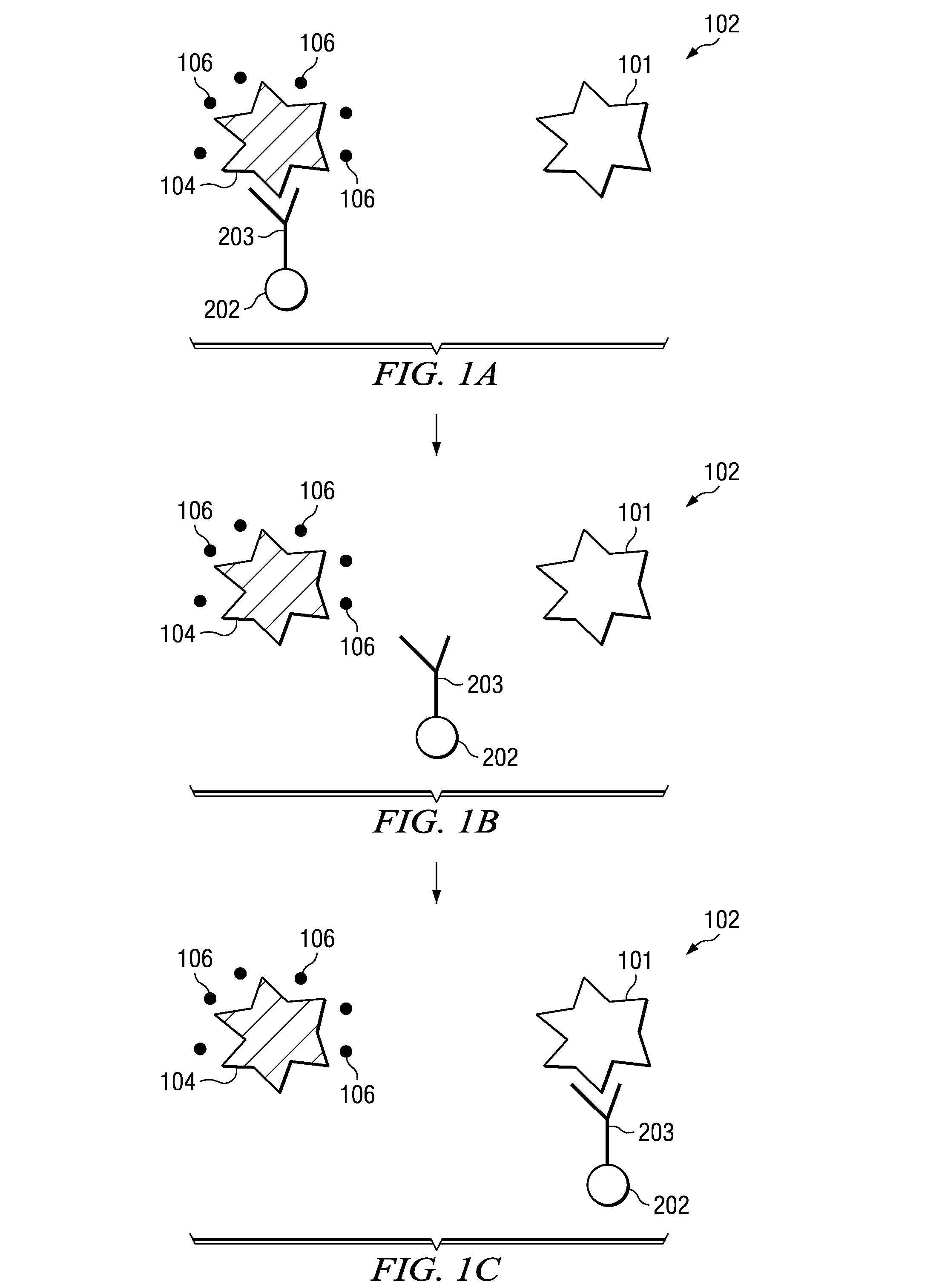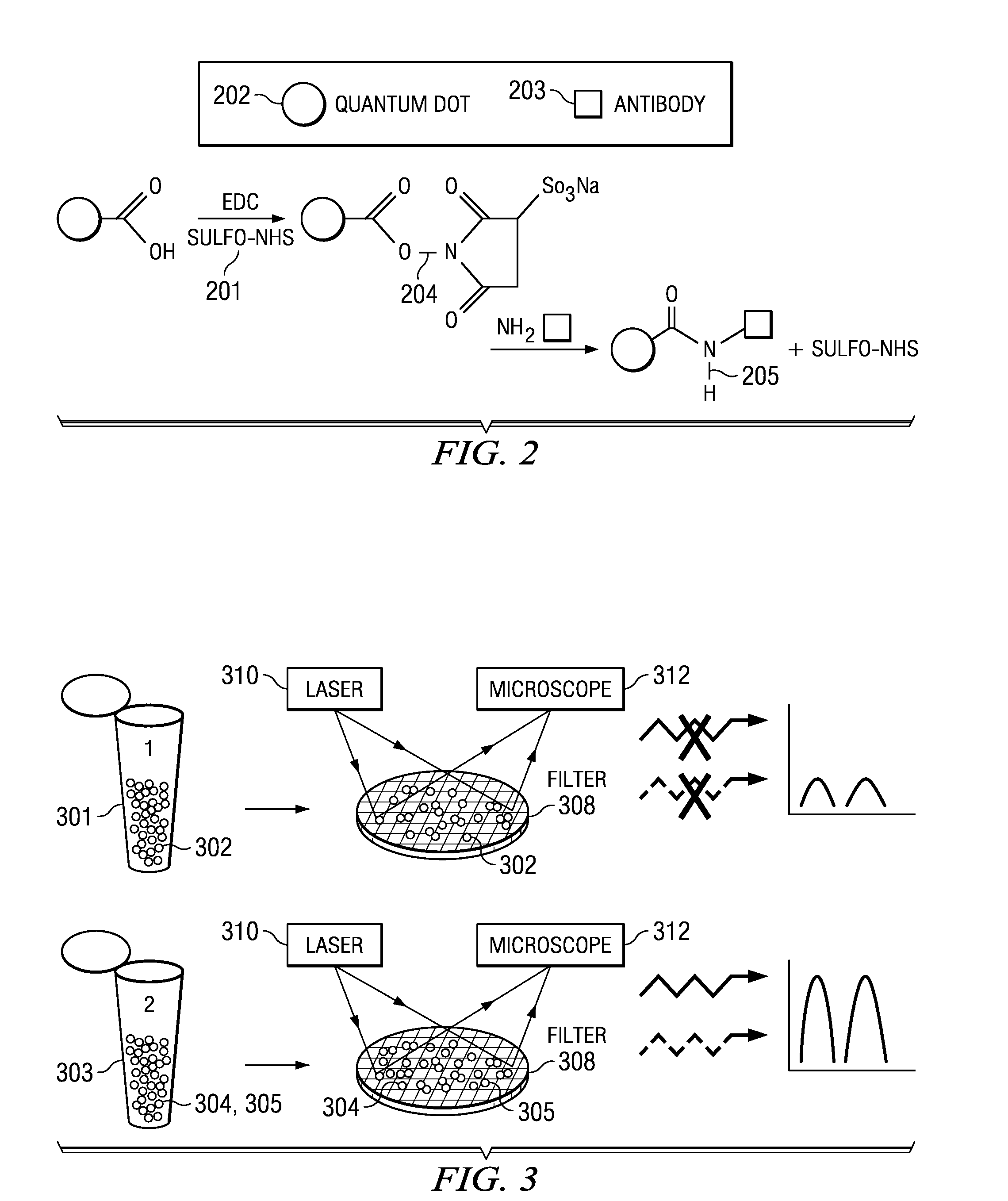Rapid detection nanosensors for biological pathogens
a biological pathogen and nanosensor technology, applied in the field of rapid detection nanosensors for biological pathogens, can solve the problems of zero or near zero false positives, achieve high signal strength, increase sensitivity, and reduce background noise
- Summary
- Abstract
- Description
- Claims
- Application Information
AI Technical Summary
Benefits of technology
Problems solved by technology
Method used
Image
Examples
example 1
Antibody / QD Attachment
[0043]We first describe the preparation of the assay test solution used in the detection of the biological contaminants. For this study, E. coli 0157:H7 monoclonal antibodies (purchased from Biocompare Inc.) were conjugated to 605 nm QDs, B. cereus antibodies (purchased from Research Diagnostics Inc.) were conjugated to 565 nm QDs, and MS-2 virus antibodies (purchased from Tetracore Inc.) were conjugated to 525 nm QDs. All of the QDs used were CdSe / ZnS carboxyl coated Evitags™ (purchased from Evident Technologies, NY).
[0044]FIG. 2 shows the cross-linking reagents 201 used in functionalizing the QDs 202. Reagents 201 contain reactive ends for specific functional groups (amine and carboxyl groups). Cross-linking agents useful for binding biomolecules to QDs include EDC (1-ethyl-3-(3-dimethylaminopropyl) carbodiimide hydrochloride) and sulfo-NHS(N-hydroxysuccinimide). In the case of QDs functionalized with carboxyl groups, EDC reacts with the carboxylic acid group...
example 2
Inactivated Target Antigen / Quencher Attachment
[0046]Using similar procedures, carboxyl terminated quenchers were conjugated to inactivated E. coli 0157:H7 (purchased from KPL Inc. of Gaithersburg, Md.), inactivated B. cereus (purchased from ATCC Inc. of Manassas, Va.) and MS-2 antigens (obtained from CERL, Champaign, Ill.). Stock solutions were prepared containing 106 colony forming units per milliliter (CFUs / mL) of each type of antigen in standard buffers, and were stored separately according to the manufacturer's specifications before the conjugation reactions. The quencher chosen for the experiment was purchased from Biosearch Technologies of Novato Calif. Specifically the Black Hole Quencher-2 (BHQ-2). BHQ-2 was chosen for its strong absorbance (quenching) over a wide range of wavelengths in the visible region, making it suitable for multiplexing, in which QDs having different emission wavelengths are used for detection. Black Hole Quenchers are organic quencher compounds that o...
PUM
 Login to View More
Login to View More Abstract
Description
Claims
Application Information
 Login to View More
Login to View More - R&D
- Intellectual Property
- Life Sciences
- Materials
- Tech Scout
- Unparalleled Data Quality
- Higher Quality Content
- 60% Fewer Hallucinations
Browse by: Latest US Patents, China's latest patents, Technical Efficacy Thesaurus, Application Domain, Technology Topic, Popular Technical Reports.
© 2025 PatSnap. All rights reserved.Legal|Privacy policy|Modern Slavery Act Transparency Statement|Sitemap|About US| Contact US: help@patsnap.com



